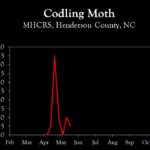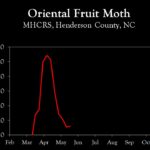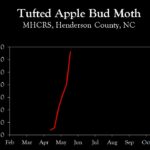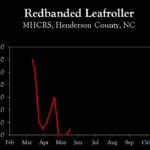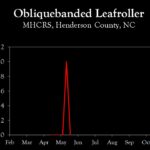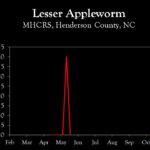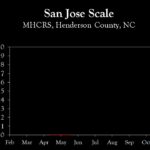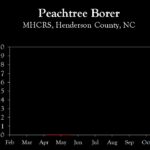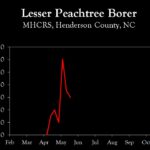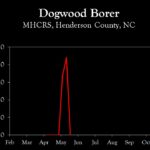WNC Orchard Insect Pest Populations – May 22, 2024
go.ncsu.edu/readext?1004566
en Español / em Português
El inglés es el idioma de control de esta página. En la medida en que haya algún conflicto entre la traducción al inglés y la traducción, el inglés prevalece.
Al hacer clic en el enlace de traducción se activa un servicio de traducción gratuito para convertir la página al español. Al igual que con cualquier traducción por Internet, la conversión no es sensible al contexto y puede que no traduzca el texto en su significado original. NC State Extension no garantiza la exactitud del texto traducido. Por favor, tenga en cuenta que algunas aplicaciones y/o servicios pueden no funcionar como se espera cuando se traducen.
Português
Inglês é o idioma de controle desta página. Na medida que haja algum conflito entre o texto original em Inglês e a tradução, o Inglês prevalece.
Ao clicar no link de tradução, um serviço gratuito de tradução será ativado para converter a página para o Português. Como em qualquer tradução pela internet, a conversão não é sensivel ao contexto e pode não ocorrer a tradução para o significado orginal. O serviço de Extensão da Carolina do Norte (NC State Extension) não garante a exatidão do texto traduzido. Por favor, observe que algumas funções ou serviços podem não funcionar como esperado após a tradução.
English
English is the controlling language of this page. To the extent there is any conflict between the English text and the translation, English controls.
Clicking on the translation link activates a free translation service to convert the page to Spanish. As with any Internet translation, the conversion is not context-sensitive and may not translate the text to its original meaning. NC State Extension does not guarantee the accuracy of the translated text. Please note that some applications and/or services may not function as expected when translated.
Collapse ▲ Once again, codling moth continues to be the key pest of concern throughout the region, and we are in the middle of first generation flight. Degree-day accumulations range from about 480 in Henderson County to 670 in Cleveland County, which corresponds to approximately 20 and 60% completion of egg hatch. Although populations appear to be quite low in commercial orchards, one should assume populations are potentially high enough to require insecticidal control if NOT using mating disruption or monitoring flight activity with pheromone traps. Two-week interval sprays of recommended insecticides are usually sufficient.
Once again, codling moth continues to be the key pest of concern throughout the region, and we are in the middle of first generation flight. Degree-day accumulations range from about 480 in Henderson County to 670 in Cleveland County, which corresponds to approximately 20 and 60% completion of egg hatch. Although populations appear to be quite low in commercial orchards, one should assume populations are potentially high enough to require insecticidal control if NOT using mating disruption or monitoring flight activity with pheromone traps. Two-week interval sprays of recommended insecticides are usually sufficient.
Tufted apple bud moth (TABM) DD accumulations range from 680 in Henderson County to 850 in Cleveland County, and a single application between about 800 to 1200 DD will provide excellent control if applying Intrepid, a diamide (Altacor, Exirel, Verdepryn) or Delegate. In Henderson County and similar elevations, 800 DD is predicted for early next week.
Learn more about southeastern apple insect pests at the Apple Insect Management page.
2024 Average Weekly Trap Captures
| HENDERSON COUNTY | |||
| Insects per trap | |||
| May 6 | May 13 | May 20 | |
| Codling moth | 0.0 | 1.0 | 0.5 |
| Oriental fruit moth | 21.5 | 11.0 | 12.0 |
| Tufted apple bud moth | 16.0 | 20.0 | 33.0 |
| Redbanded leafroller | 0.0 | 0.0 | 1.0 |
| Obliquebanded leafroller | 0.0 | 1.0 | 0.0 |
| Lesser appleworm | 0.0 | 4.0 | 0.0 |
| Apple maggot (abandoned and research orchards) | – | – | – |
| Brown marmorated stink bug (commercial) | – | – | – |
| Brown marmorated stink bug (unsprayed) | 0.0 | 0.0 | 0.0 |
| Spotted tentiform leafminer | n/a | 0.0 | 0.0 |
| Dogwood borer | 17.0 | 22.0 | 0.0 |
| Peachtree borer | 0.0 | 0.0 | 0.0 |
| Lesser peachtree borer | 12.0 | 7.0 | 6.0 |
| San Jose scale | 0.0 | 0.0 | 0.0 |
*Note that these averages illustrate only the timing of insect emergence and fluctuations in populations, and are not representative of population levels in any given orchard. The only way to have an accurate assessment of an individual orchard’s populations is to set up traps in that orchard.
2024 Accumulated Degree Days
| HENDERSON COUNTY | ||||
| May 6 | May 13 | May 20 | ||
| Codling moth (Biofix: April 15) | 239 | 336 | 439 | |
| Oriental fruit moth (Biofix: March 15) | 625 | 755 | 893 | |
| Tufted apple bud moth (Biofix: April 15) | 331 | 461 | 599 | |



